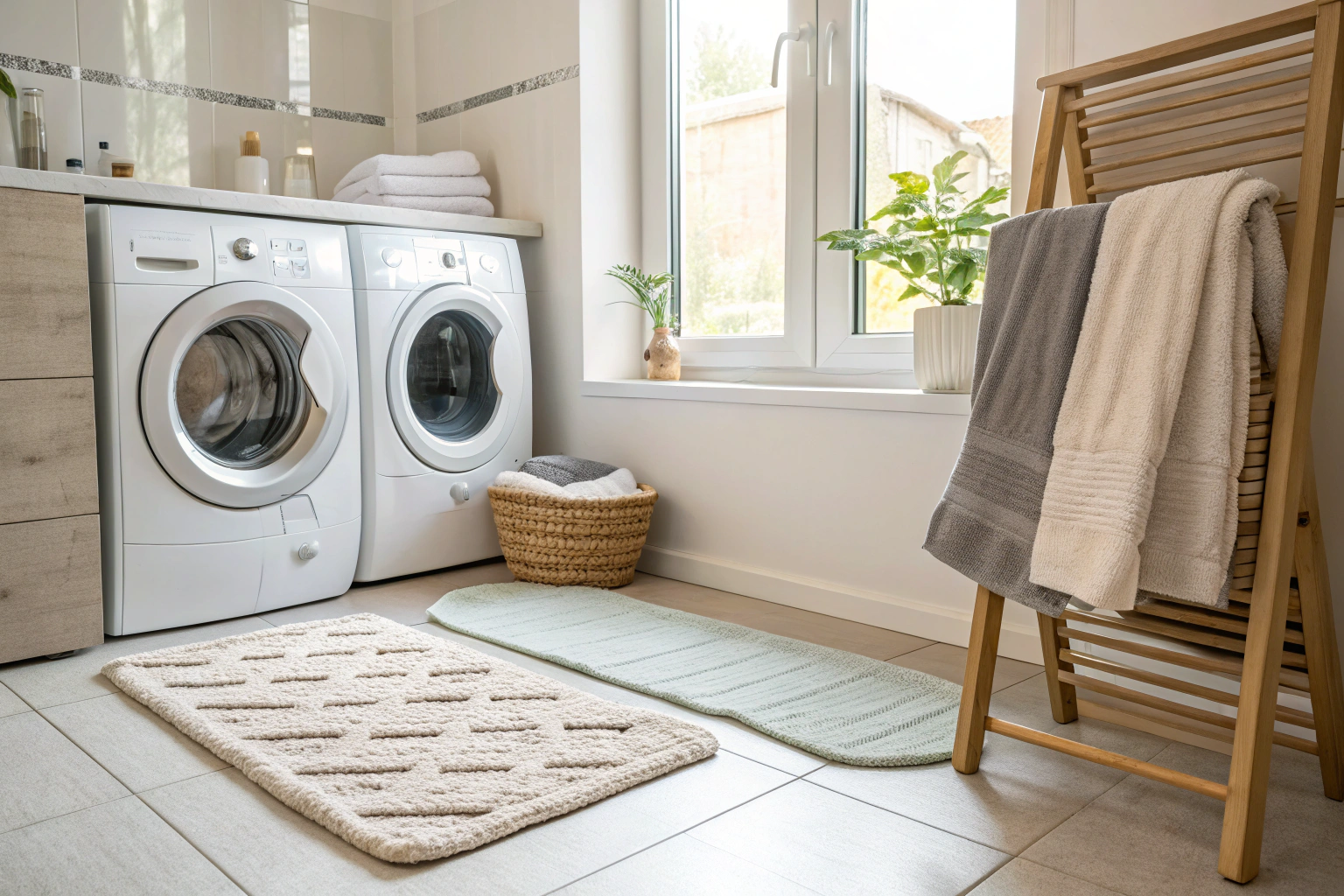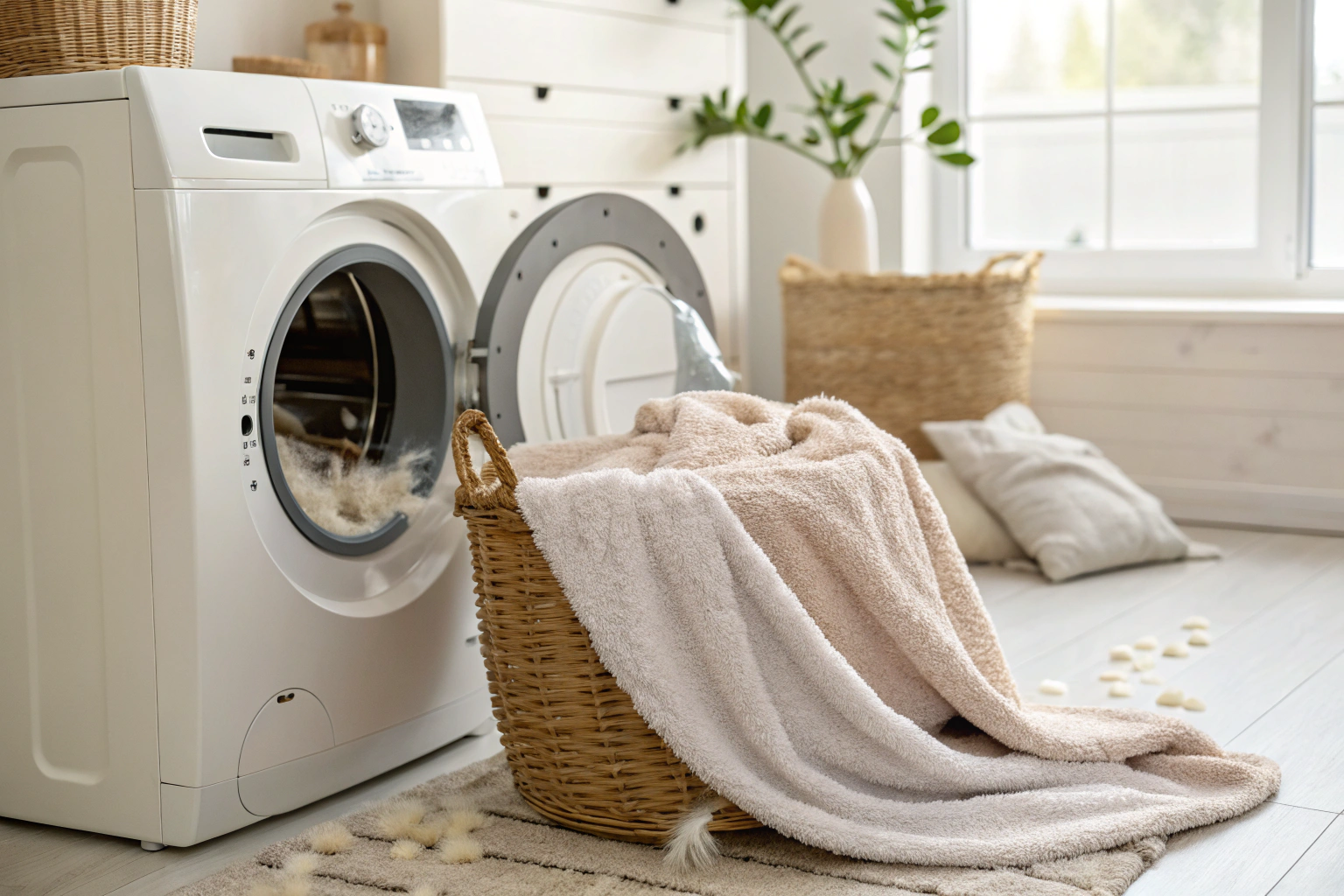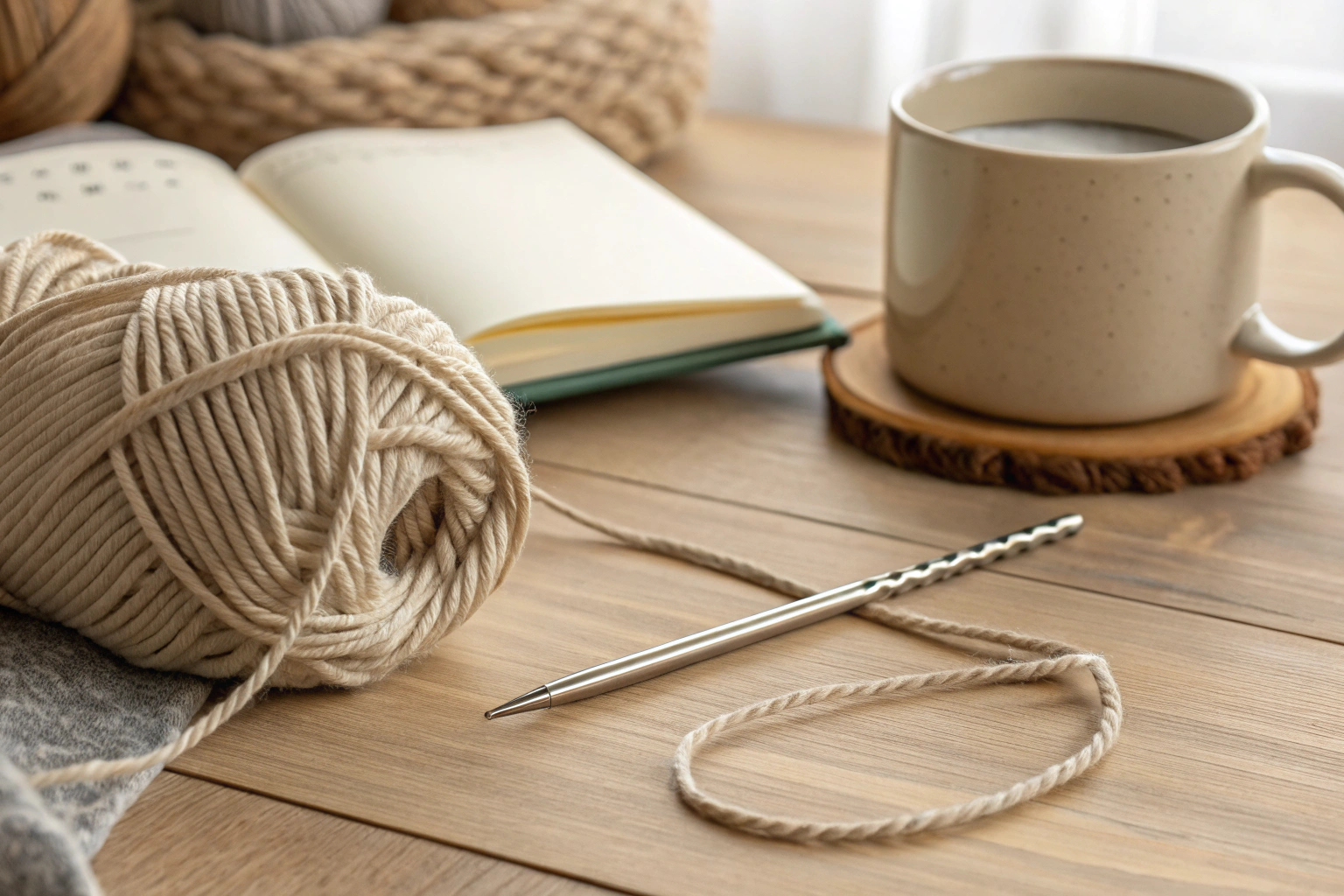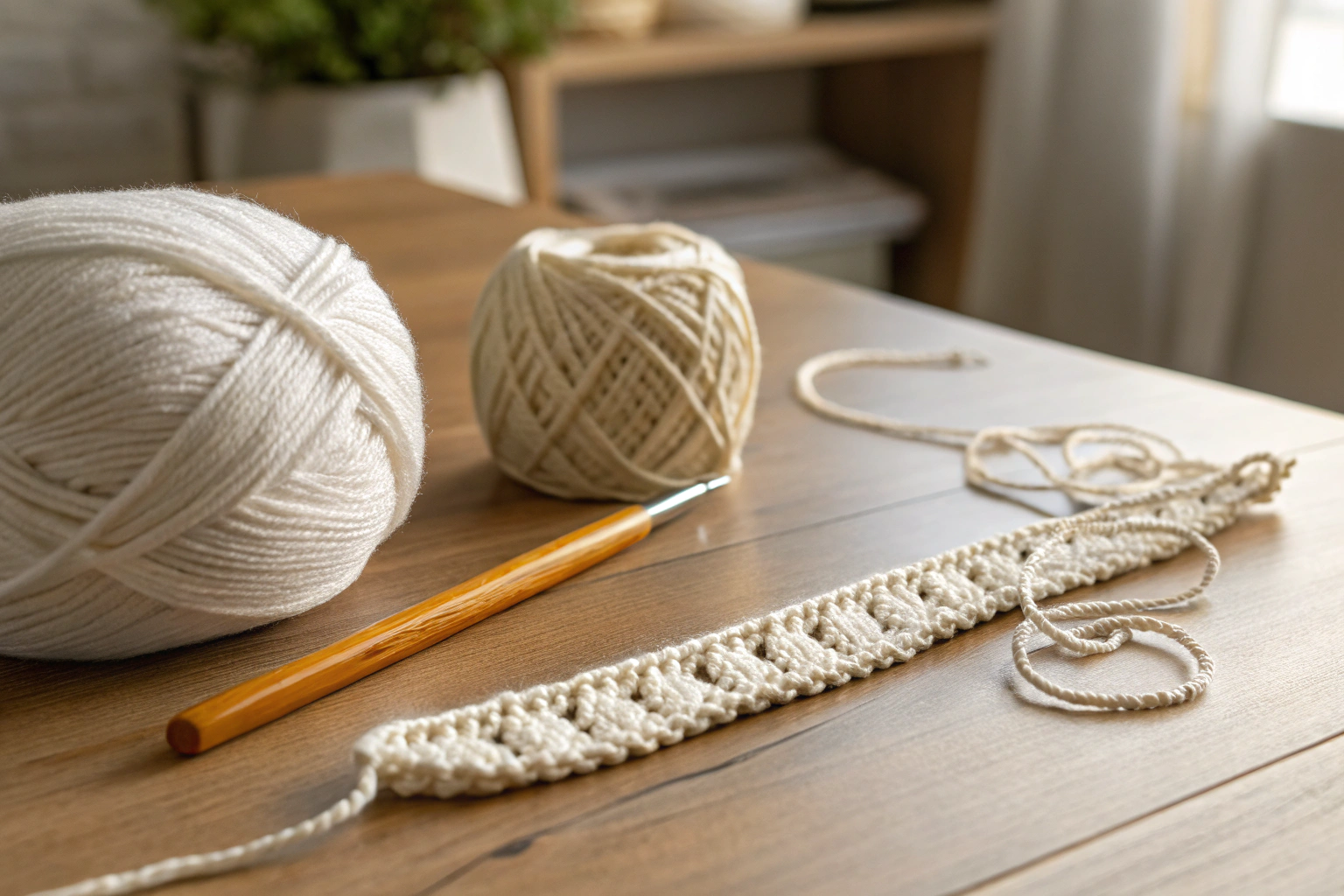The answer to can you put bath mats in the dryer depends entirely on the mat’s material and backing. Many mats, especially those with a rubber or plastic non-slip backing, can melt, crack, or even create a fire hazard if exposed to high heat. Always check the care label first, as this is the only way to prevent damage to both your mat and your appliance. Improper drying can ruin the mat’s texture and essential non-slip properties, making your bathroom less safe.
Key Benefits at a Glance
- Prevent Damage: Protects the rubber backing from melting or cracking, which preserves its non-slip function.
- Avoid Fire Hazards: Using low or no heat on dryer-safe mats prevents the rubber from overheating and becoming a fire risk.
- Stop Mold Growth: Proper drying ensures no moisture is trapped in the fibers, which prevents mold, mildew, and musty odors.
- Extend Mat Lifespan: Following the care instructions helps maintain the mat’s texture, absorbency, and structural integrity for longer.
- Save Time & Energy: Safely machine drying when possible is much faster than air-drying, while using low heat settings conserves energy.
Purpose of this guide
This guide is for homeowners and renters who want to clean their bath mats safely and effectively without causing damage. It solves the common problem of uncertainty around machine drying, which can lead to ruined mats, a damaged dryer, or even a safety hazard. Here, you will learn how to quickly read your mat’s care label to determine if it is dryer-safe and what settings you should use.
We provide simple, step-by-step instructions for machine drying and offer safe alternatives for mats that cannot go in the dryer. By following this advice, you can avoid common mistakes like using high heat, which destroys rubber backings and can cause clumping. The goal is to help you maintain a clean, hygienic, and long-lasting bath mat that remains safe and functional for everyday use.
Introduction
After years of testing different bath mat materials and drying methods in my own home, I've learned that proper drying techniques can make or break your bath mat's lifespan. The simple question "can you put bath mats in the dryer" doesn't have a one-size-fits-all answer—it entirely depends on your mat's material and construction. In this comprehensive guide, I'll share my hands-on experience with various bath mat types, walk you through safe drying practices, and help you avoid the costly mistakes that can damage both your mats and your dryer. You'll discover how to identify your bath mat type, master proper drying techniques, and extend your investment through smart maintenance practices.
Understanding different types of bath mats and their dryer compatibility
Through years of testing different bath mat materials in my home, I've discovered that the most critical factor determining dryer safety is whether your mat has rubber backing. This distinction affects everything from heat tolerance to drying methods, making proper identification essential before you even think about tossing that mat into your dryer.
Before drying, always prewash bath mats to remove residues that trap moisture and encourage mildew growth: Turn Prewash Into the Essential Laundry Step You Never Skip.
Each bath mat material has distinct visual and tactile characteristics that I've learned to recognize over time. Cotton mats feel substantial and absorbent, microfiber versions have a soft, almost velvety texture, while chenille mats feature distinctive looped fibers that create their signature plush feel. The key is understanding how these materials respond to heat and mechanical action in your dryer.
- Check for rubber backing by lifting corners
- Feel for foam padding underneath fabric
- Look for care labels on mat edges
- Test fabric thickness and texture
- Identify anti-slip features or grips
| Material | Dryer-Safe? | Recommended Settings | Notes |
|---|---|---|---|
| Cotton (fabric-only) | Yes | Medium heat | Most durable option |
| Microfiber (fabric-only) | Yes | Low-medium heat | Quick drying |
| Chenille (fabric-only) | Yes | Low heat | Prevents fiber damage |
| Rubber-backed cotton | No/Caution | Air dry preferred | Heat damages backing |
| Memory foam | No | Air dry only | Heat destroys foam |
| Bamboo fiber | Yes | Low heat | Eco-friendly option |
Differences between bath mats and bath rugs and their dryer compatibility
In my experience managing multiple bathrooms, I've learned to distinguish between functional bath mats—those grippy, absorbent mats placed directly outside showers and tubs—and decorative bath rugs that add style near vanities or in larger bathroom spaces. Bath rugs typically feature more delicate materials like shag fibers, intricate patterns, or decorative elements that require gentler drying approaches than their utilitarian counterparts. I've found that many bath rugs incorporate materials sensitive to heat, such as acrylic fibers or decorative backing materials that can melt or distort under standard dryer conditions.
Fabric only bath mats safe drying practices
My cotton and microfiber bath mats have become my go-to choices precisely because they handle dryer conditions so well. I've developed a reliable routine where I shake out excess water before loading them into the dryer, always using medium heat for cotton and low-to-medium for microfiber materials. The game-changer in my drying process has been adding tennis balls—initially an experiment that proved invaluable for preventing the clumping and uneven drying that plagued my early attempts.
- Shake out excess water before placing in dryer
- Set dryer to medium heat for cotton, low for delicate fabrics
- Add 2-3 tennis balls to prevent clumping
- Check mat every 15 minutes during drying cycle
- Remove while slightly damp to prevent over-drying
Rubber backed bath mats special considerations
I learned about rubber backing risks the hard way when I destroyed a favorite bath mat in my dryer several years ago. The high heat caused the rubber to crack and peel, creating a sticky mess that took considerable effort to clean from my dryer drum. The science behind this damage is straightforward—rubber compounds break down under heat, losing their flexibility and adhesion properties. When I absolutely must speed-dry a rubber-backed mat, I use the lowest heat setting for very short cycles, checking every ten minutes, though I strongly recommend air drying instead.
- Cracking or peeling rubber backing
- Rubber particles in washing machine
- Loss of anti-slip properties
- Backing becoming sticky or gummy
- Visible separation between fabric and rubber
Step by step guide to safely drying bath mats
My tested drying method starts well before the mat enters the dryer, with preparation steps that prevent most common problems. I always inspect each mat after washing, looking for loose rubber particles or signs of backing deterioration that could create issues during the drying cycle. The temperature selection process depends entirely on the material—I use medium heat for sturdy cotton mats, low heat for delicate fabrics like chenille, and avoid the dryer entirely for anything with rubber or foam backing.
To prevent musty odors, ensure bath mats are completely dry before storage—dampness invites mildew: How to Get Mildew Smell Out of Towels.
“If your bath mat is made of cotton or other machine-washable material, you can dry it in the dryer. Place the bath mat in the dryer with a few dry towels to help absorb moisture and reduce drying time. Set the dryer to a low heat setting and run it for about 20 to 30 minutes.”
— Snowe Home, March 2024
Source link
- Pre-wash inspection: Check for loose rubber or damage
- Wash on gentle cycle with mild detergent
- Shake out excess water and debris
- Place mat alone or with similar items in dryer
- Select appropriate heat setting based on material
- Add dryer balls to improve air circulation
- Set timer for 20-minute intervals to check progress
- Remove when dry but not overheated
- Allow to cool completely before use
Common mistakes that damage bath mats in the dryer
High heat has been the culprit in most of my bath mat disasters over the years. I've watched perfectly good mats shrink, lose their softness, or develop that stiff, cardboard-like texture that signals irreversible damage. Overloading the dryer creates another set of problems—mats don't tumble properly, leading to uneven drying and increased wear on both the mats and the dryer mechanism. Certain brands I've tested, particularly those with synthetic fibers or decorative elements, prove especially vulnerable to temperature damage, requiring extra vigilance during the drying process.
- DON’T use high heat on any bath mat type
- DON’T overload the dryer with multiple mats
- DON’T dry rubber-backed mats without checking backing first
- DO check mats every 15-20 minutes during drying
- DO use dryer balls to prevent tangling
- DO read care labels before first wash and dry
Risks of machine washing bath mats before drying
My experience with rubber particles coming off mats during washing taught me to inspect every mat carefully before it goes into the dryer. I discovered that aggressive washing cycles can loosen rubber backing, creating particles that not only damage the mat further but can also clog dryer vents or create residue on other items. Now I use specific washing techniques—gentle cycles, cold water, and minimal agitation—to preserve backing integrity before the drying stage. One particularly memorable incident involved a budget bath mat that shed so much rubber during washing that it left black specks throughout my dryer, requiring thorough cleaning before I could use it again.
Alternative ways to dry bath mats
For delicate bath mats or those with rubber backing, I've perfected several air-drying methods that work effectively year-round. My preferred setup involves a sturdy drying rack positioned near a heat vent during winter months, which significantly reduces drying time while providing the gentle treatment these mats require. During humid summer conditions, I combat potential mildew odors by positioning mats in well-ventilated areas and sometimes using a fan to improve air circulation.
| Method | Drying Time | Best For | Pros | Cons |
|---|---|---|---|---|
| Outdoor line drying | 2-4 hours | All types | Free, gentle | Weather dependent |
| Indoor drying rack | 4-8 hours | Rubber-backed | Controlled environment | Takes up space |
| Bathroom towel bar | 6-12 hours | Small mats | Convenient | Slow drying |
| Floor drying (flat) | 8-24 hours | Memory foam | Maintains shape | Very slow |
“The rug’s laundry care label will provide the recommended drying method. When in doubt, hang it up to dry or air dry outside. Make sure your rug is completely dry before using it.”
— Whirlpool, April 2024
Source link
How to extend your bath mat's lifespan through proper care
My bath mat maintenance schedule has evolved through years of trial and error, settling on weekly washing for high-traffic bathrooms and bi-weekly for guest bathrooms. I've discovered that specific cleaning products work better for different stain types—white vinegar excels at removing soap scum buildup, while baking soda paste tackles stubborn mildew stains effectively. The frequency of washing significantly impacts longevity; over-washing breaks down fibers prematurely, while under-washing allows buildup that becomes increasingly difficult to remove. Between washes, I maintain cleanliness by shaking out debris and ensuring proper ventilation to prevent moisture retention.
Wash bath mats with gentle detergents and avoid fabric softeners that reduce absorbency—care like you would for handmade textiles: How to Wash Handmade Items.
| Stain Type | Cleaning Solution | Treatment Method |
|---|---|---|
| Soap scum | White vinegar + water | Soak 30 minutes, scrub gently |
| Mildew | Baking soda paste | Apply, let sit 1 hour, rinse |
| Hair dye | Hydrogen peroxide | Spot treat, rinse immediately |
| General dirt | Mild detergent | Pre-treat before washing |
- Wash bath mats weekly in high-traffic bathrooms
- Rotate between two mats to extend lifespan
- Hang mats after each use to air dry
- Vacuum regularly to remove hair and debris
- Store clean, dry mats in ventilated areas
When to replace your bath mat signs of dryer damage
Through my experience with various bath mat brands and materials, I've developed a keen eye for distinguishing between salvageable wear and irreversible damage. Visual indicators include extensive cracking or peeling of rubber backing, significant color fading, or fabric thinning that affects absorbency. Tactile signs prove equally important—loss of slip resistance, persistent odors despite thorough cleaning, or that rough, cardboard-like texture that indicates fiber damage from excessive heat exposure. Different materials show wear patterns distinctly; cotton mats typically fray at edges first, while microfiber versions lose their softness gradually. My replacement timeline averages 18-24 months for frequently used fabric-only mats, though rubber-backed versions often require replacement sooner due to backing deterioration.
- Rubber backing is cracking or peeling extensively
- Mat no longer provides slip resistance
- Persistent odors despite thorough cleaning
- Fabric is thinning or developing holes
- Colors have faded significantly or bled
- Mat has lost its absorbency
- Edges are fraying or coming apart
Common questions about drying bath mats
Based on questions I frequently receive from friends and family about bath mat care, I've compiled solutions for the most common concerns and special circumstances. Seasonal challenges like dealing with extremely wet mats during winter months require adjusted approaches—I use longer air-drying times and strategic placement near heating sources. Special cases such as extra-large mats or unusually shaped ones often require creative solutions, like commercial dryer access or specialized drying setups.
- Can I dry multiple bath mats together? Only if they’re the same material and size
- What if my mat is too large for the dryer? Air dry flat or use commercial dryer
- How do I prevent mats from tangling? Use dryer balls and don’t overload
- Can I use fabric softener on bath mats? Avoid it – reduces absorbency
- What’s the maximum temperature for rubber-backed mats? Air dry only recommended
- How often should I replace my bath mat? Every 1-2 years with proper care
Frequently Asked Questions
Yes, many bath mats can be put in the dryer, especially those made from cotton or microfiber without rubber backing. Always check the care label to ensure it’s safe, and use a low heat setting to prevent damage. Drying on high heat may cause shrinkage or wear out the fabric faster.
No, it’s not recommended to put rubber-backed bath mats in the dryer as the high heat can melt or degrade the rubber, causing it to crack or stick to the dryer drum. Instead, air dry them flat or hang them to preserve the backing. This helps maintain their non-slip properties and extends their lifespan.
Bath mats and rugs can be dried in a dryer on low heat if they are machine-safe, or by air drying them flat to avoid shrinkage. For rubber-backed items, always air dry to prevent damage to the backing. Shake off excess water before drying to speed up the process and maintain shape.
Use a low to medium temperature setting when drying bath mats in the dryer to avoid damaging the fibers or causing shrinkage. High heat can weaken the material and reduce absorbency over time. Check the care instructions on the label for specific recommendations based on the mat’s material.
To extend the life of your bath mat, wash it regularly in cold water and air dry it whenever possible to prevent wear from heat. Avoid using harsh detergents or bleach, and shake it out after each use to remove moisture and debris. Rotating between multiple mats can also reduce overuse and prolong durability.
To quickly dry a bath mat, use the spin cycle in your washing machine to remove excess water, then tumble dry on low heat. Alternatively, hang it in a well-ventilated area or use a fan to speed up air drying. Avoid direct sunlight to prevent fading, and ensure it’s completely dry before use to avoid mold.





